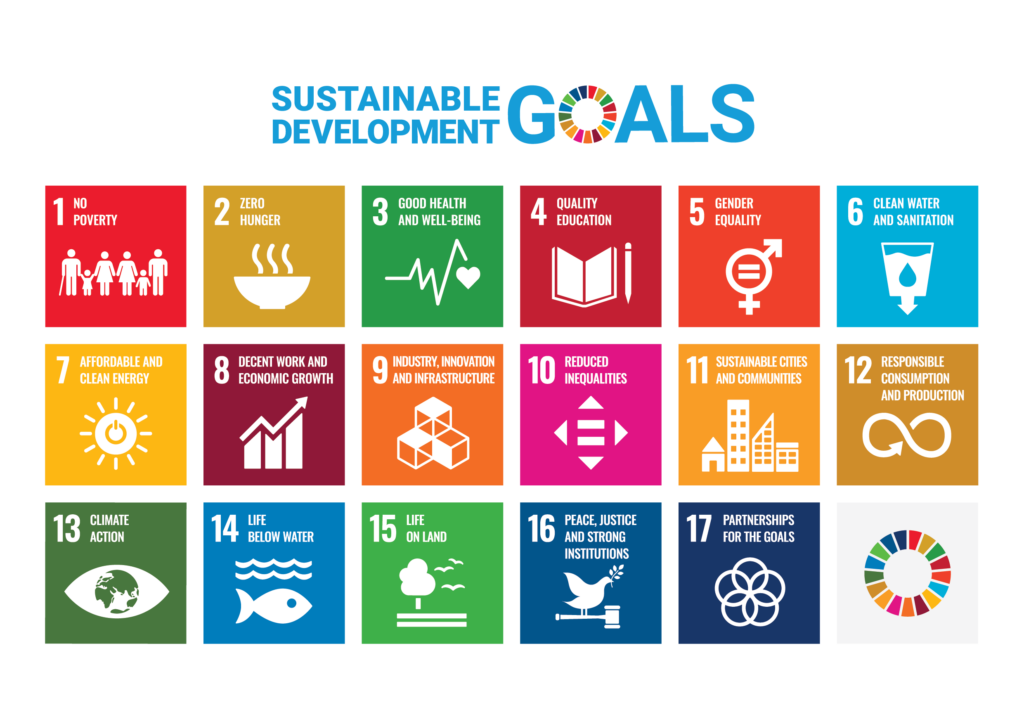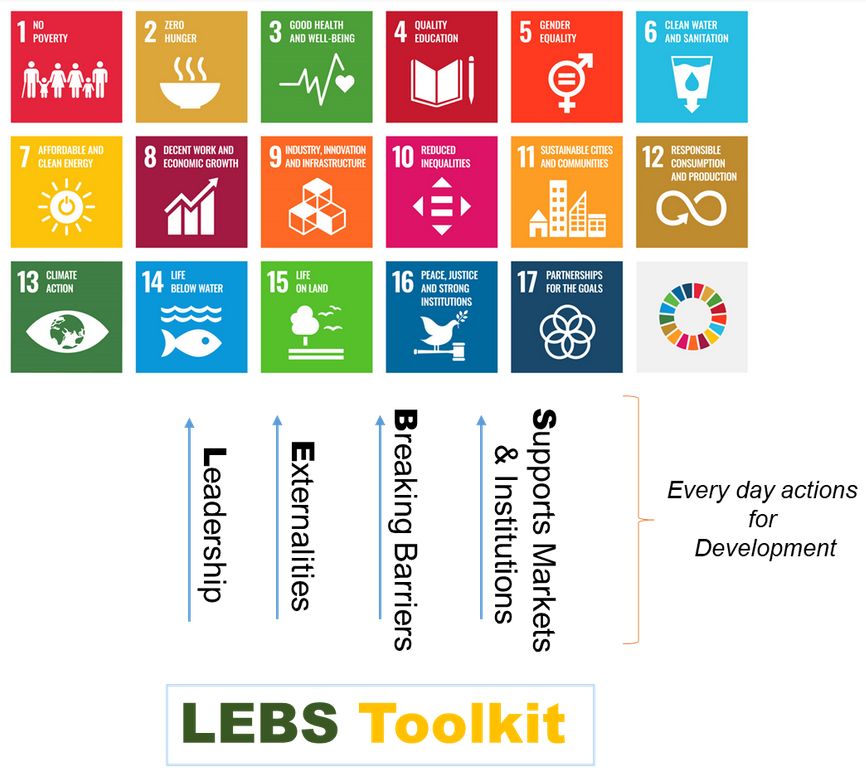Development Economist and OAD Fellow Dr. Tawanda Chingozha presents a framework and toolkit for astronomers and natural scientists to think about addressing development challenges.
Conceptual Framework
The Sustainable Development Goals (SDGs) are a universal benchmark for conceptualizing and measuring the various aspects of development. Each SDG has a set of targets that further unpack the various things/interventions that communities and governments may work on to achieve a better life for all.
The SDGs are concise and clear-cut, but this may not necessarily hold true when one thinks about how blue skies sciences such as astronomy can contribute to the attainment of the sustainable development goals. It is one thing to understand the SDGs as an astronomer (natural scientist) and it may be another to know some of the day to day things that one can do towards achieving different development outcomes or SDGs. This is the gap the LEBS Toolkit seeks to plug. The toolkit provides guidance on some day to day actions an astronomer or natural scientist can do to make a development impact; where impact is measured using the SDGs and/or SDG targets. The LEBS Toolkit is a Call to Action whose main points are derived from Economics.
Figure 1 – Relationship between LEBS Toolkit and SDGs
Why LEBS Toolkit is important for communicating astronomy
Many times astronomers find themselves having to convince others on its benefits. A lot of work has been done regarding the economic value of astronomy. One of the organizations leading this work is the Office of Astronomy for Development (OAD). The OAD’s approach has been to identify different flagship themes through which astronomy may translate to development. The LEBS Toolkit builds on the SDGs and the work already done by the OAD (OAD flagships in particular) to articulate the main channels or actions through which astronomers may contribute to development. The toolkit is aimed at assisting the astronomy community communicate the link between astronomy and development in a practical way.
LEBS Overview
LEBS is an acronym for:
- L – Leadership
- E – Externalities
- B – Break Barriers to Entry
- S – Support Functioning Markets & Institutions
At the center of the LEBS Toolkit is the assumption that many development challenges that the world face emanate from market failure. Market Failure is an economic phenomenon in which the market forces of demand and supply fail to allocate resources efficiently. There are many causes of market failure, and here we discuss only those causes that are related to the 4 components of the LEBS Toolkit as follows:
1. Leadership
It is difficult to control the flow of information. Markets on their own cannot limit the amount of false/toxic information (including baseless conspiracies) that people have access to. Someone somewhere will always have the incentive to spread false or even harmful information. Scientists/astronomers may have a leadership role in helping circulate the right information within their influence circles. A good example is vaccine hesitancy that dominated headlines during the COVID-19 pandemic. Scientists/astronomers may play an important leadership role to help correct inaccurate views/beliefs regarding different matters/issues that affect society (including vaccine hesitancy).
2. Externalities
An economic externality is a phenomenon where a transaction/activity affects a third person/entity that is not involved. An example of a negative externality is when a fishing community is affected by water pollution that is caused by a factory that discharges effluent in the river upstream. A positive externality occurs when for instance a mining company constructs a dam to meet their water requirement, but also allow the surrounding community to access the water resource. Scientists/astronomers may allow surrounding communities to benefit from their activities/resources (even though they were not necessarily earmarked for the communities) as a manifestation of positive externalities. At the same time, scientists/astronomers may use their skills/knowhow in instrumentation to produce sensors that measure noise (or other forms of pollution) and assist authorities take corrective measures – thereby minimizing the occurrence and impact of negative externalities.
3. Break Barriers to Entry
Monopolies have plenty of leverage in determining the selling price of their goods and services, and resultant higher prices may exclude whole communities. Monopolies in medicine, medical equipment and other sectors exist due to barriers to entry. Barriers may include government restrictions (say for example to establish a private nuclear station), high start-up costs, strategic national importance (for water and electricity utilities in some countries) or just because there is insufficient knowledge. Where monopolies for certain goods that can help improve people’s lives exist because of lack of information, scientists have an important role to play since they are usually the custodians of information regarding different scientific breakthroughs. At the height of the COVID-19 pandemic, astronomers and engineers in South Africa responded to shortages of ventilators by producing prototype ventilators – hence breaking down barriers to entry.
4. Support Functioning Markets & Institutions
Development challenges thrive in environments where markets do not efficiently work (transport, employment etc.) and also where the institutional setting is poor (harmful stigmas & taboos, corruption and lack of transparency etc.). Through application programming and machine learning for example, astronomers/scientists can more effectively match job seekers to jobs, or improve food distribution so that some do not go hungry while others throw away food in a particular area. In poor institutional settings, the scientific community may take a lead in rejecting regressive tendencies such as discrimination and harmful taboos. E-governance (a product of application programming) may also help promote less human interaction and opportunities for malfeasance in situations where corruption and the lack of transparency are pervasive.
Are you ready to apply the Toolkit?
If you would like to try your hand at using the toolkit download the PDF below and complete the task at the end.


